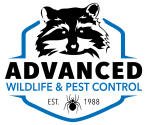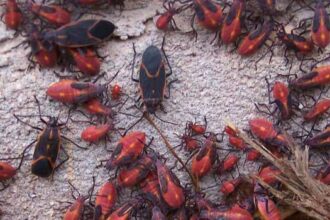
October 2, 2025 | Boxelder Bug Control
How to Get Rid of Boxelder Bugs in Your Home
As cool autumn weather sweeps across Wisconsin, one of the most noticeable changes is not just the leaves turning color, but the sudden surge of boxelder bugs! While these insects may not bite or damage your home, their sheer numbers and indoor invasions can quickly turn into a seasonal headache for Milwaukee homeowners. In this article, we will discuss what boxelder bugs are, why their activity peaks in the fall, the areas they most often invade, pest prevention tips, and how our pest treatments stop them from overwintering inside your home.
Enjoy a Pest-FREE Home Today!
Get rid of boxelder bugs with our professional pest control in Milwaukee, Wisconsin.
Schedule Now!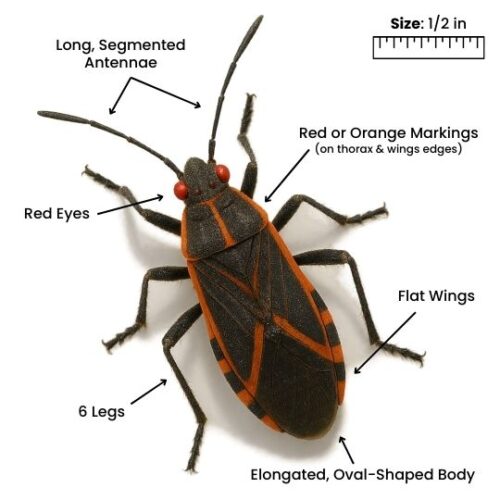
What Are Boxelder Bugs?
The boxelder bug (Boisea trivittata) is a familiar sight in Wisconsin during late summer and fall. Adults are about half an inch long, with black bodies lined by red or orange markings along the thorax and wing edges. Their elongated bodies are shaped like sunflower seeds, with flat wings folded across their backs. They also have red eyes that bug out, six legs, and long antennae. Nymphs, or immature bugs, are smaller, bright red, and wingless.
-
Size: 1/2 Inch (11-13 mm)
-
Color: Black with Reddish-Orange Markings on the Dorsum
-
Shape: Flat, Elongated, Oval Body
- Wings: 2 Pairs
- Antennae: Yes
- Legs: 6
When are Boxelder Bugs Most Active in Wisconsin?
Boxelder bugs are most active from September to November. As temperatures drop, they leave their host trees in search of warmth and shelter. They often gather in huge numbers on windows and warm, sunny walls, particularly on the south and west-facing sides of houses. They then look for cracks, vents, and other entry points to overwinter indoors. Identifying these infestations early is the best way to prevent a fall invasion from becoming a winter-long nuisance.
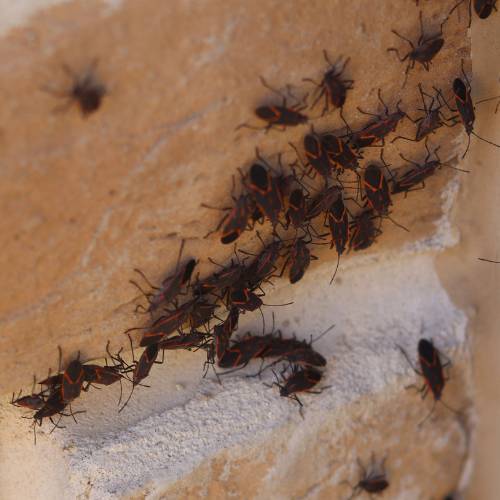
Where Do Boxelder Bugs Hide in Homes?
Windows and Doors
Check frames for worn weather stripping, cracked caulking, or tiny gaps. Bugs often bask on sunny window ledges before sneaking through openings.
Siding and Exterior Walls
South- and west-facing siding attracts clusters of boxelder bugs on sunny afternoons. Cracks or loose panels provide easy access indoors.
Attic Vents and Rooflines
Warm air escaping near soffits, vents, and eaves lures boxelder bugs upward. Unscreened or unsealed areas become hidden entryways.
Foundation and Utility Lines
Inspect ground-level cracks and gaps around plumbing, gas, and electrical penetrations. Bugs often cluster at the base of homes before working inside.
Basements and Crawl Spaces
Once indoors, boxelder bugs tend to settle in cool, quiet areas such as basements, wall voids, or crawl spaces.
Why are Boxelder Bugs a Problem Indoors?
While boxelder bugs don’t spread disease or cause damage, their vast numbers create headaches for homeowners, especially in the fall when they seek warmth and shelter in our homes. They can leave dark stains on walls, curtains, and furniture, emit a foul odor when crushed, and reappear throughout the winter as they move around indoors. In Milwaukee’s climate, once they establish themselves inside, they can linger until spring, making fall prevention essential.
6 Ways to Keep Boxelder Bugs Out of Your Home
Your first line of defense against boxelder bugs is prevention. Here are some quick tips to keep boxelder bugs at bay.

Seal Cracks and Crevices
Small gaps in door and window frames, siding, foundations, or utility lines are open invitations for pests. Seal cracks with wire mesh and caulk to deter boxelder bug infestations.

Install Screens and Weatherstripping
Torn window screens and worn weatherstripping are easy access points. Replacing them not only helps with pest control but also improves your home’s energy efficiency.
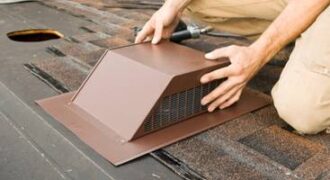
Install Vent Covers
Cover vents, soffits, and chimneys with fine mesh screening to prevent boxelder bugs from slipping inside when seeking warmth.
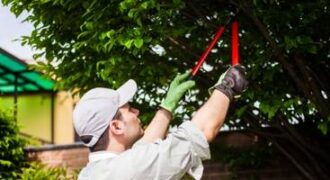
Clean Up Landscaping
Trim trees, shrubs, and other vegetation near the house. Rack up leaves and other plant debris where boxelder bugs gather.

Vacuum, Don’t Squish
If boxelder bugs make it indoors, vacuum them up instead of squishing. Crushing them can release an unpleasant odor and leave stains on walls or fabric.
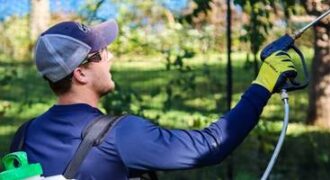
Apply Perimeter Treatments
A licensed pest professional can apply exterior barrier sprays to siding, foundations, window and door frames, and other entry points in early fall before bugs move indoors.
Professional Boxelder Bug Control in Milwaukee, WI
Advanced Wildlife and Pest Control offers boxelder bug control and extermination services in Milwaukee and southeastern Wisconsin. Our certified exterminators apply targeted pest treatments designed to provide long-lasting protection, focusing on high-risk areas such as siding, windows, and foundation gaps. We rely on safe and effective products, paired with proven exclusion methods, to prevent boxelder bugs from settling indoors.
With our professional approach, you can enjoy the fall season without the frustration of swarms gathering on your walls or creeping into your living spaces. Contact us today at (262) 242-4390 for reliable pest control in Milwaukee and Southeastern Wisconsin.
Boxelder Bug FAQs
Do boxelder bugs bite?
No, boxelder bugs don’t bite people or pets. They have piercing-sucking mouthparts used for feeding on plants. They may feel like a mild pinch if handled, but they are not harmful and do not spread disease. The main issue is that they gather in large numbers and can stain surfaces with their droppings, making them a nuisance more than a danger.
What trees do boxelder bugs feed on?
Boxelder bugs mainly feed on boxelder trees, but they may also eat from maple, elm, and ash trees.
Are boxelder bugs harmful to pets or children?
No, boxelder bugs are harmless to both people and pets. They don’t bite, spread disease, infest food, or damage property. The worst they do is give off a foul odor or leave stains if crushed. Rarely, someone with allergies or sensitive skin may notice mild irritation after direct contact. Overall, they’re a nuisance pest — bothersome but not dangerous.
How long do boxelder bugs live?
Boxelder bugs live about one year. They spend the summer feeding and reproducing, then overwinter in protected areas like homes before becoming active again in spring.
What is the lifecycle of boxelder bugs?
Boxelder bugs go through a simple lifecycle: egg → nymph → adult. In spring, females lay eggs on trees, leaves, or in crevices. These hatch into small red nymphs that grow through several molts over the summer. By late summer, they become adults, mate, and begin the cycle again. Adults often seek shelter in homes or buildings to overwinter, allowing them to survive until the following spring.
